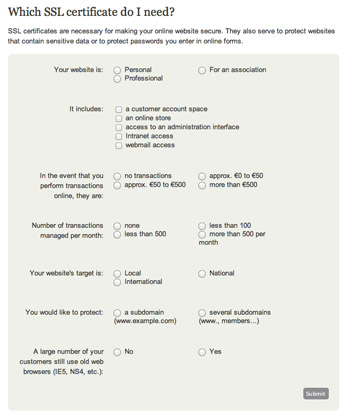I’ve talked in the past about starting the sales process for SSL certificates “upstream” – that is, offering the appropriate certificate to your customer after assessing their needs, rather than immediately going to a lower cost domain validated certificate.
You can have a look at that post if you missed it, but the basic premise is that domain validated certificates are great for individuals, while organization and extended validation certificates should be the default certificate that you sell to your business customers.
SSL marketing – some new ideas
Expanding on that a bit, I want to get into how SSL is marketed these days and hopefully give you some ideas that you can use to stand out from the crowd and do things a little differently.
Those who sell SSL generally know the difference between a domain-validated certificate and an organization or extended validated certificate. But do your customers who are buying SSL know the difference, and more importantly, do they really need to know?
I’ve looked at a ton of sites selling SSL lately and I noticed that the vast majority of these companies sell SSL certificates using buzzwords, comparison charts and acronyms. It’s OV vs. DV and EV, UCC/SAN, multi-domain this and dynamic vs. static seal that.
Spec sheets are great for people who understand specs, and I’m not saying you shouldn’t have one on your site – some customers will be looking for that information and it’s good to have it. Apple keeps things simple when it comes to buying a MacBook Pro, but if you want to know which processor and how much L3 cache there is, the info is just a click away.
But the average certificate buyer will end up skimming over all this info they don’t understand and hitting on the one thing they do understand: the price. But without that understanding of what makes the products different, they won’t know why a TrueBusiness ID certificate is more expensive than a QuickSSL.
Educate or simplify
You have a couple of options to counter this: spend time educating customers on the differences (SSL 101), or take the confusion out of your marketing.
In my travels around the web, I also found a couple of examples of companies taking a bit of a different approach to selling SSL:


You’ll note some similarities – gone are most of the buzzwords and acronyms. Instead, both examples provide easy-to-understand guidance. Are you a small business? Then the Premium or Business plan is for you.

Most buyers will understand Standard vs. Pro vs. Business SSL and self-select the right certificate for their needs. But if they don’t, one provider offers a nice interactive simulator that asks a few questions and tells the user what they should buy (in some cases, it’s the inexpensive Standard cert that is suggested – the goal, remember, is to sell the appropriate certificate for their needs).
Selling the right SSL certificate to the customer is job one
Take a look at your own marketing for SSL and see if you can do things a little differently. Maybe the goal is to move your small business customers to an organization-validated certificate from a domain-validated product (and push up your margins a bit in the process). A little effort around education and simplification of your marketing might be all you need to do to accomplish that.
Ensuring that your customer gets the appropriate SSL certificate for their needs should be priority number one.
